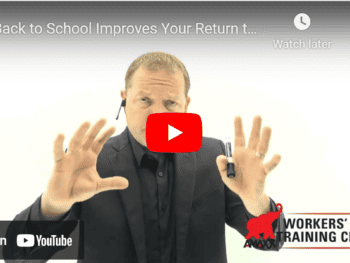
Objective to Bring Skills Back to Prior Levels
Work hardening aims to return not only the employee’s physical ability but also to bring the employee’s functional, behavioral and vocational skills back to the skill level present before the injury. The therapist administering the work hardening program should be provided a detailed job description to tailor the work hardening program to the specific job requirements of the injured employee. Occasionally, the employee who needs work hardening has attitude issues or chronic pain that has caused the employee to become severely deconditioned.
!– BEGIN BIG RTW CALLOUT –>
Click Link to Access Free PDF Download
“13 Research Studies to Prove Value of Return-to-Work Program & Gain Stakeholder Buy-In”
Program Involves Physician, Nurse Case Manager, and Therapists
For an injured employee to be in a work-hardening program, the treating physician will make the request, normally a written prescription. The nurse case manager should arrange the work hardening program with physical therapy or occupational therapy facility that conducts work hardening programs on a regular basis. The nurse case manager should stay actively involved with the treatment until it has been totally completed.
There can be significant variation in the work-hardening treatment plans. There will be variations in the type and frequency of treatment and variations in the amount of time needed to complete the program. The work hardening plan created for the particular employee will acknowledge and incorporate these factors in the individualized program design, as the goal of work hardening is to return the employee to work.
Optimize Work Capability of Employee
The work hardening program or plan designed for the employee will optimize the work capability of the employee while minimizing the employee’s risk of re-injury when the employee returns to work. Each individual plan may incorporate one or more of the following:
- Simulation of specific work tasks
- Simulation of general work tasks
- Physical reconditioning
- Training on how to prevent future injury
- Training on how to perform the work tasks to minimize pain
- Training on how to modify work tasks
- Training on how to modify daily living activities
- Psychological intervention to demonstrate to the employee that he is capable of returning to work
The employee who understands the reasoning for work hardening and wants to recover to the maximum from the injury will embrace the concept. Often this is an employee who has been on modified duty and understands what is needed to return to work full duty.
However, if the employee has an attitude, behavioral issues, chronic pain, or psychological issues interfering with a return to work, work hardening can be effective if the therapist is aware of the issues that will interfere with the successful completion of the work hardening program. The nurse case manager on the workers’ compensation claim should discuss these barriers with the therapist and agree on the treatment plan necessary overcome the barriers.
Success Measured in Several Areas
The success of the work hardening program can be measured in several different areas. The therapist will report to the treating physician during and after the work hardening program. Information the therapist will provide to the treating physician includes:
-
- Musculoskeletal improvement
- Cardiovascular status
- Motivation
- Attitude
- Behavior
- Vocational status (in relation to job-specific requirements)
- Need for future accommodations
FREE DOWNLOAD: “13 Research Studies to Prove Value of Return-to-Work Program & Gain Stakeholder Buy-In”
One mistake physicians and others make in the use of work hardening programs is to wait until the employee has totally recovered from the work-related injury before starting work hardening. If the employee has been off work for months, and the employer – adjuster – nurse case manager knows the employee will be returning to a physically demanding job, work hardening should be incorporated into the physical therapy program and not as a subsequent program to the physical therapy.

Contact: mstack@reduceyourworkerscomp.com.
Workers’ Comp Roundup Blog: http://blog.reduceyourworkerscomp.com/
©2022 Amaxx LLC. All rights reserved under International Copyright Law.
Do not use this information without independent verification. All state laws vary. You should consult with your insurance broker, attorney, or qualified professional.
















